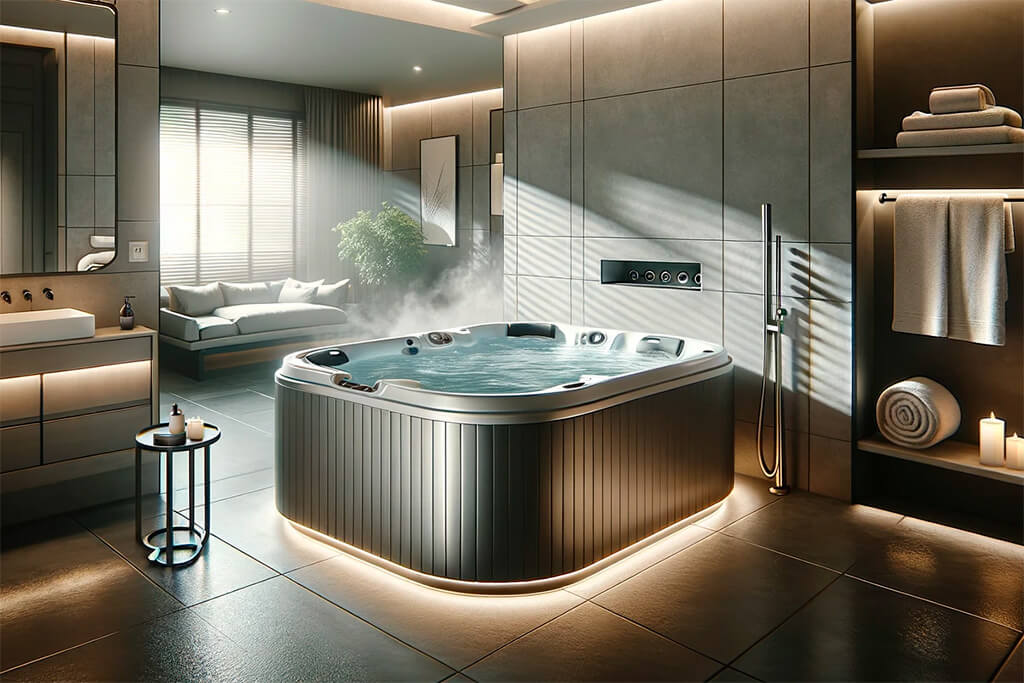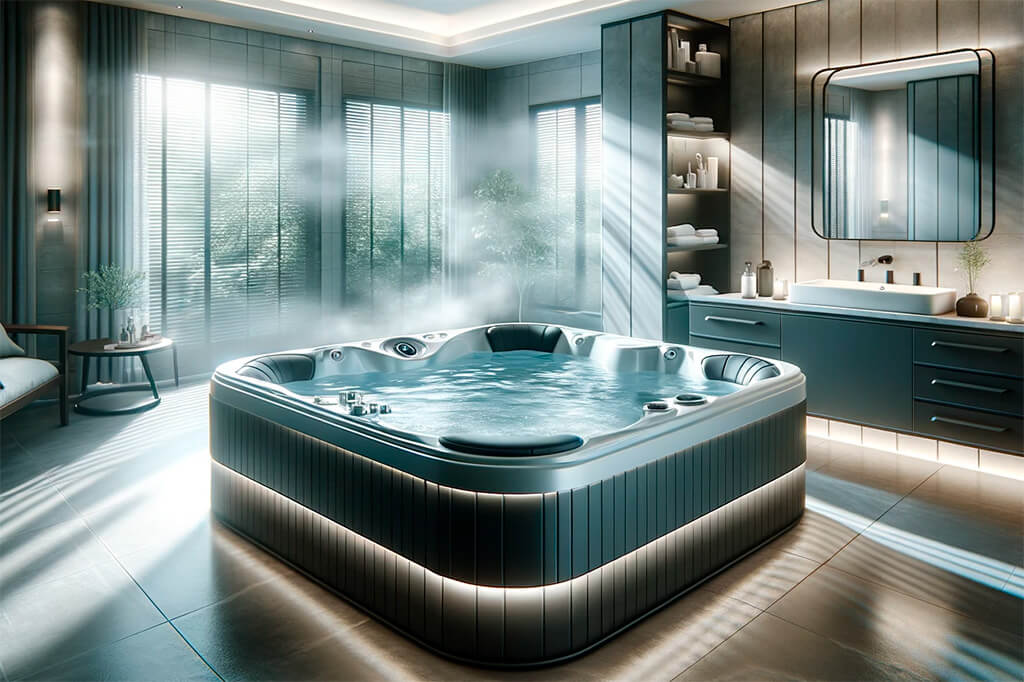Embarking on hot tub maintenance is much like tackling any home improvement project – it demands both attention to detail and a practical approach. Just as a well-built deck or a flawlessly finished basement enhances your home’s value and appeal, a properly maintained hot tub is a jewel in your home’s relaxation crown. It’s not just about aesthetics, it’s about ensuring the health of the tub and, more importantly, the health of its users.
- Why Drain and Clean?
- Hygiene: Regular draining is crucial. Think of your hot tub as a small, intimate pool. Would you enjoy swimming in a pool that hasn’t been cleaned for months? The same goes for your hot tub.
- Water Balance: Chemical treatments can manage water quality to an extent, but eventually, the water becomes saturated with dissolved solids. This is when it’s time for a change.
- Preserving Your Investment: Regular maintenance avoids the build-up of minerals and gunk that can clog and corrode your hot tub’s inner workings.
- Audience Relevance:
- DIY Enthusiasts: There’s immense satisfaction in maintaining your hot tub yourself. It’s a testament to your handiness and self-reliance.
- Construction Professionals: Understanding the nuances of hot tub maintenance adds another string to your bow, potentially widening your client services.

Timing is Everything – When to Drain Your Hot Tub
Like any seasoned carpenter will tell you, timing and signs are everything. The same applies to draining your hot tub. Here’s what to keep an eye on:
- Frequency: On average, every 3-4 months is a good benchmark, but this varies with usage. Heavy use? You might need to drain more often.
- Signs It’s Time:
- Water Clarity and Quality: Murky or discolored water is a clear red flag.
- Odors: A well-maintained tub should have little to no odor.
- Foam: While some foam is normal, an abundance is a sign of chemical imbalance or contamination.
Pre-Game – Preparing to Drain Your Hot Tub
In construction, preparation is half the battle. The same holds true here.
- Safety Considerations:
- Electrical Safety: Always disconnect power at the source. It’s not enough to just turn off the tub.
- Clear the Area: Ensure a safe, unobstructed workspace. This isn’t just a tip, it’s a must.
- Tools and Materials:
- Pump or No Pump? A submersible pump is a great time-saver but not a necessity.
- Hose and Buckets: Essential for draining and cleanup.
- Cleaning Supplies: A range of cleaners and sponges for different surfaces and components.
- Protective Gear: Gloves and goggles are non-negotiables.
- Preparation Steps:
- Consult the Owner’s Manual: Each model has its peculiarities.
- Drain Location: Familiarize yourself with the drain valve or prepare your pump setup.
- Hose Positioning: Ensure proper drainage away from sensitive areas like gardens or foundations.

Drain Game – Choosing the Right Drainage Method
Draining a hot tub is akin to choosing the right tool for a job. Here are your options:
- Submersible Pump:
- Pros: Rapid water removal.
- Cons: Additional equipment cost, if you don’t already own one.
- Gravity Drain:
- Pros: Simple, no extra equipment needed.
- Cons: Time-consuming and less control over flow.
Step-by-Step Guide to Draining the Hot Tub
When it comes to draining your hot tub, the process is straightforward, but it requires attention to detail to ensure it’s done safely and effectively. Let’s break it down into manageable steps:
- Power Off: Always start by turning off the power at the breaker. This is a non-negotiable safety step to prevent any electrical hazards.
- Equipment Selection: Depending on your chosen method, have the right equipment at hand.
- Using a Submersible Pump:
- Connect the pump to a hose.
- Place it at the tub’s lowest point to ensure maximum water removal.
- Turn on the pump and let it run until the water level drops.
- Opting for Gravity Drain:
- Find the drain valve on your hot tub, which is typically located at the bottom or on the side.
- Attach a hose to the valve, leading the other end to an appropriate drainage area.
- Open the valve and allow gravity to drain the water.
- Using a Submersible Pump:
- Monitoring: Keep an eye on the draining process. Ensure the water is directed correctly and avoid any potential flooding.
- Final Steps: Once most of the water is drained, remove the remaining water with a bucket or sponge to prevent stagnation.
Post-Drainage Steps
With your hot tub drained, it’s time to clean and refill it, ensuring a fresh and hygienic soaking experience.
- Thorough Cleaning: Use a mild, non-abrasive cleaner and a soft cloth or sponge to gently clean the interior. Pay special attention to the jets and any crevices where grime can accumulate.
- Rinsing: It’s essential to thoroughly rinse off any cleaning agents to prevent them from mixing with the bathwater.
- Refilling the Hot Tub:
- Ensure that the drain valve is closed or the pump is removed before refilling.
- Attach your hose and fill the tub with fresh water.
- Once filled, it’s crucial to balance the water’s chemistry with the appropriate chemicals.
- Regular Maintenance: To reduce the frequency of draining, keep a close eye on your water’s chemical balance and cleanliness. Using a cover when the hot tub is not in use also helps keep out debris and contaminants.
FAQ Section
It’s recommended to drain your hot tub every 3 to 4 months, though this can vary based on usage and the number of bathers.
Before doing so, check your local environmental regulations. If permitted, ensure the water is chemically neutral to avoid damaging your lawn or plants.
Using a pump, draining can take around 15 to 30 minutes, while gravity draining might take a couple of hours, depending on the size of your tub.
Check for any blockages in the drain or pump. Also, ensure that your hot tub is positioned on a level surface for effective drainage.
Yes, cleaning is an essential step after draining to remove any residues and ensure the tub’s hygiene.
